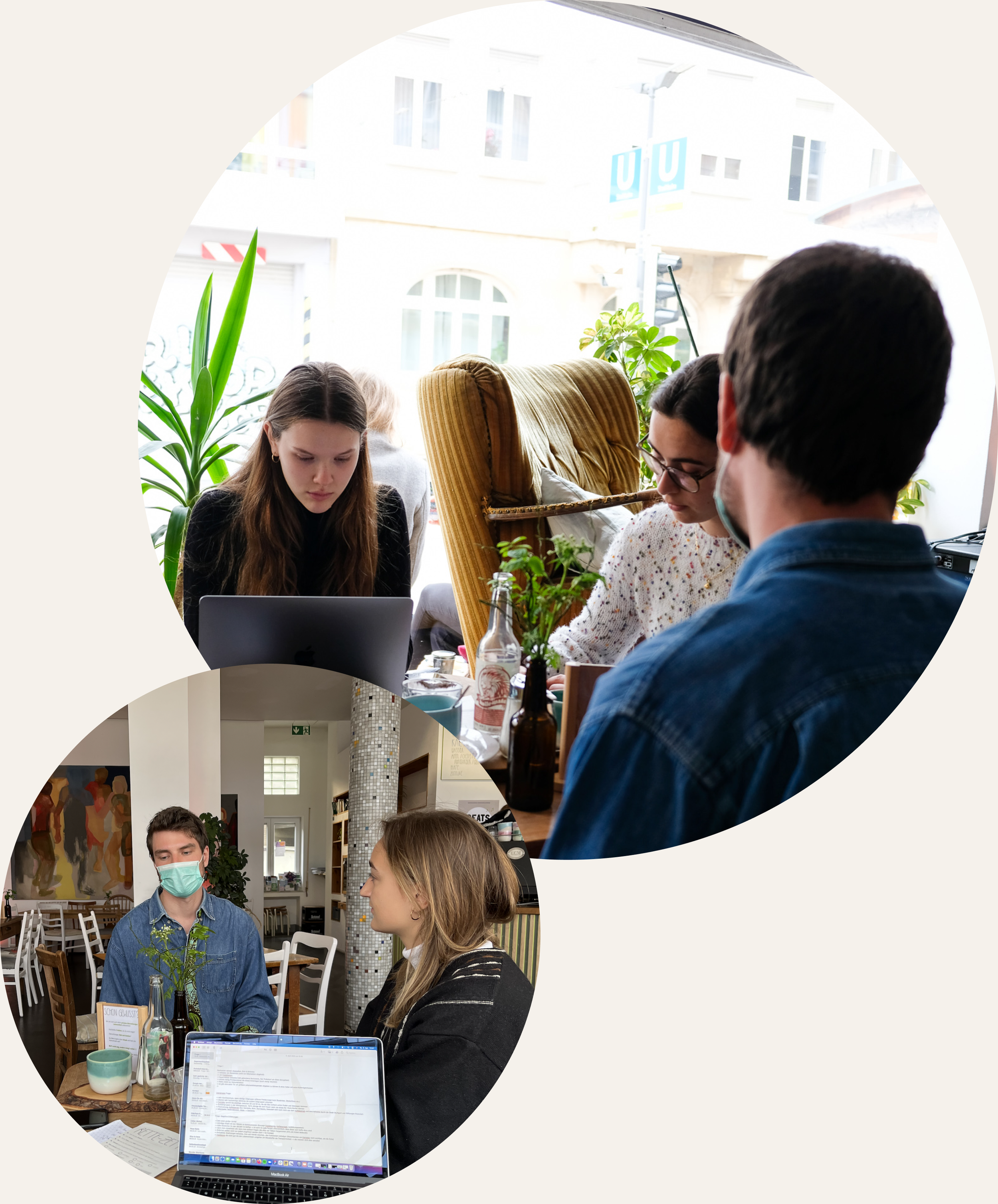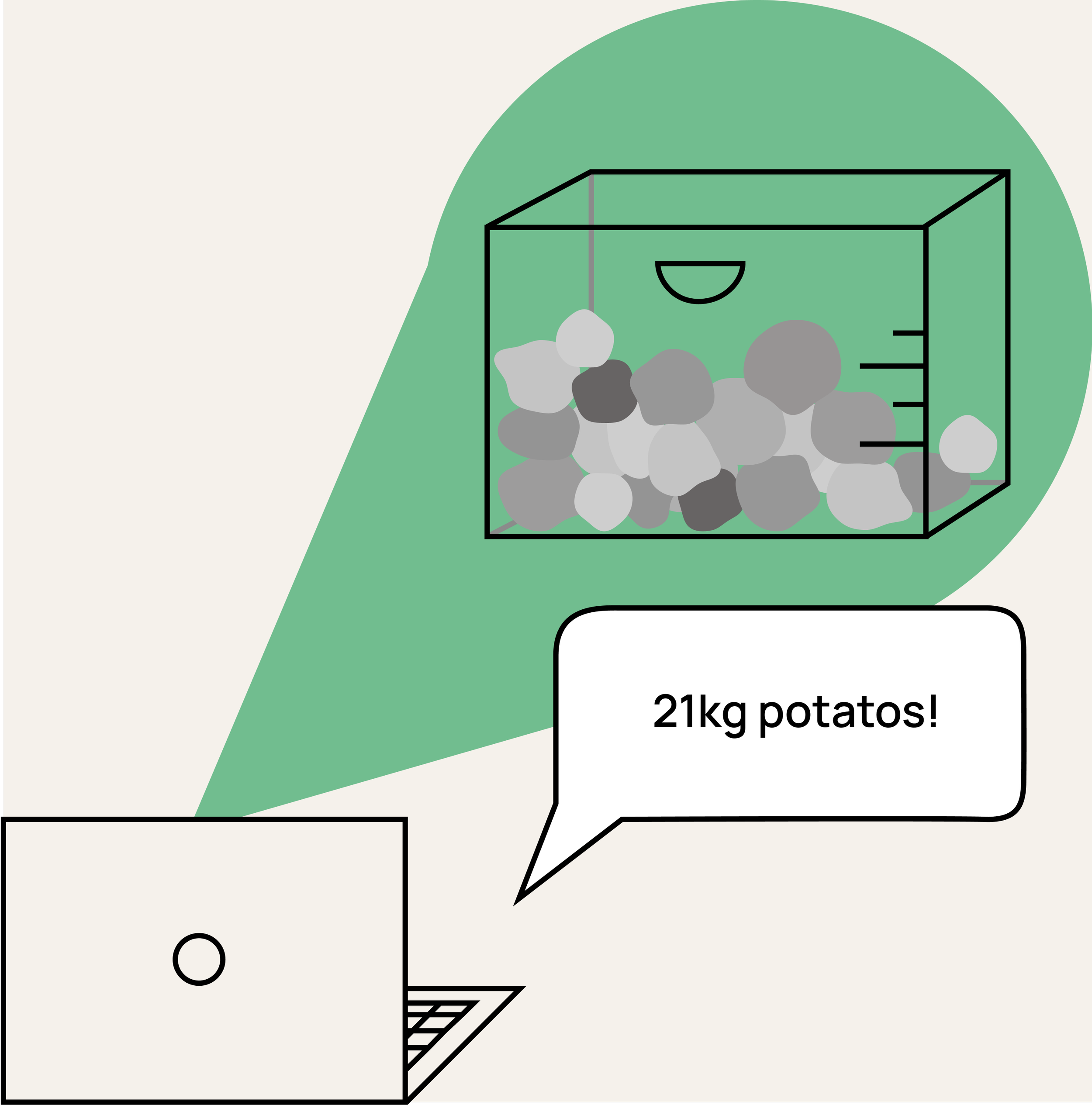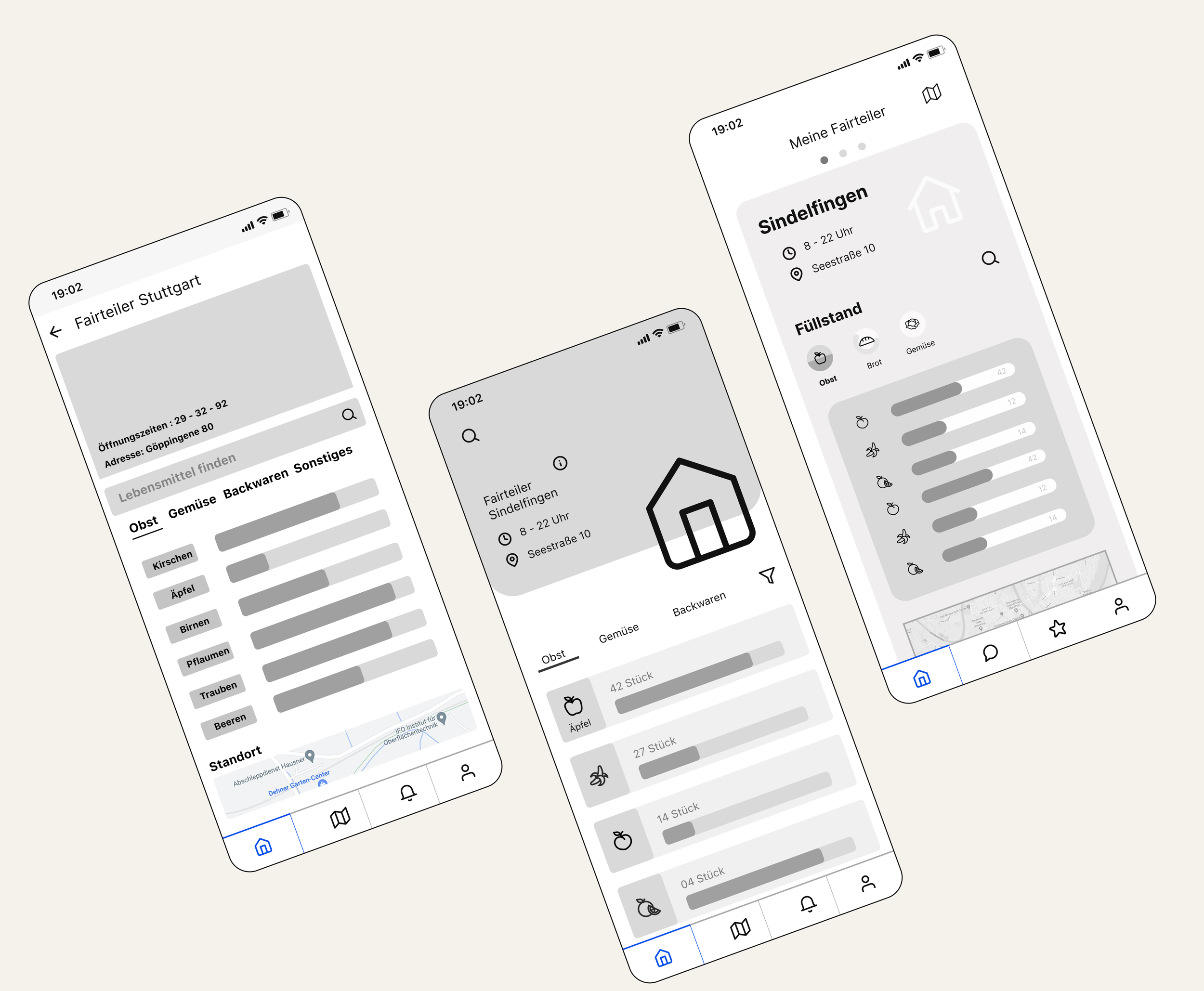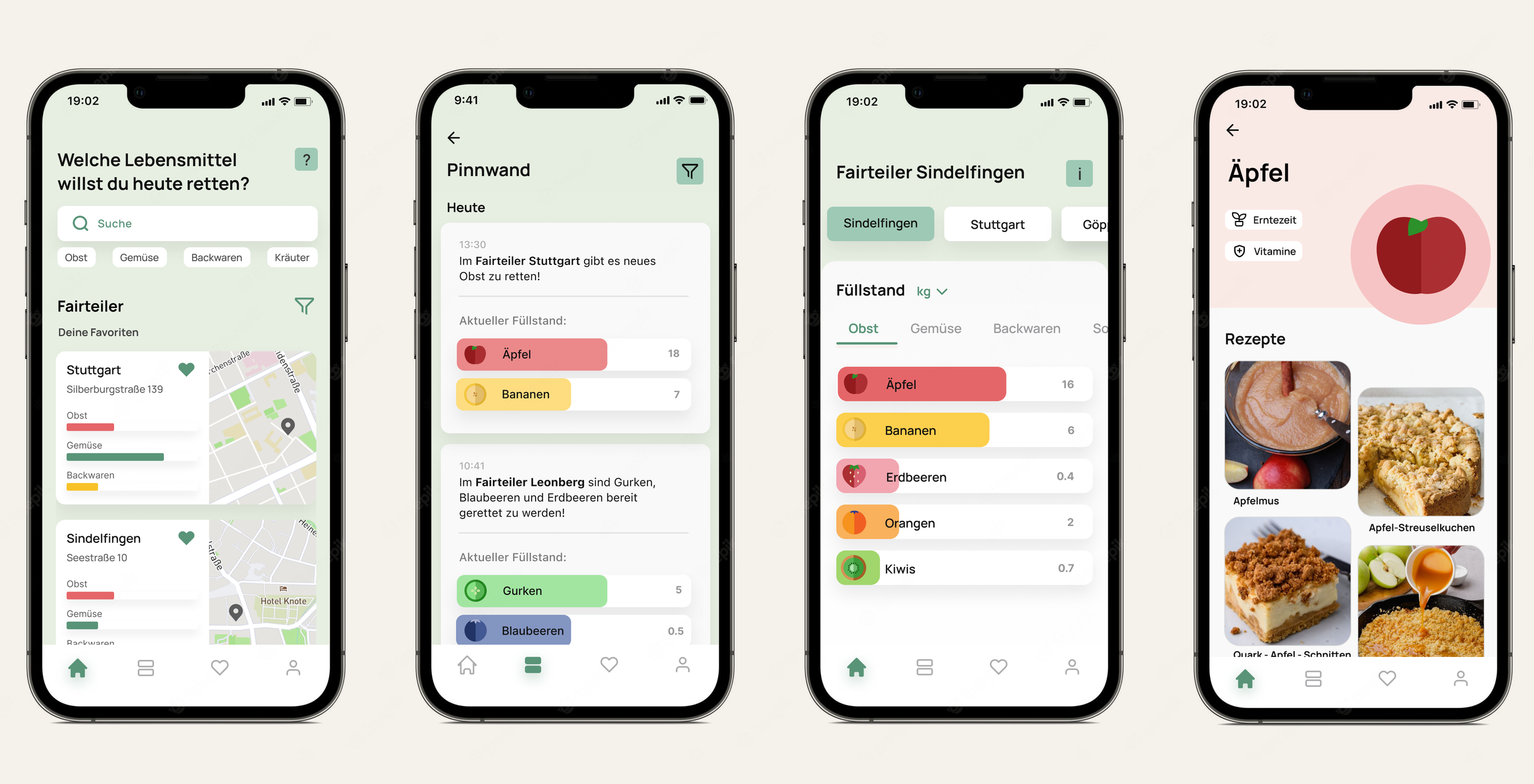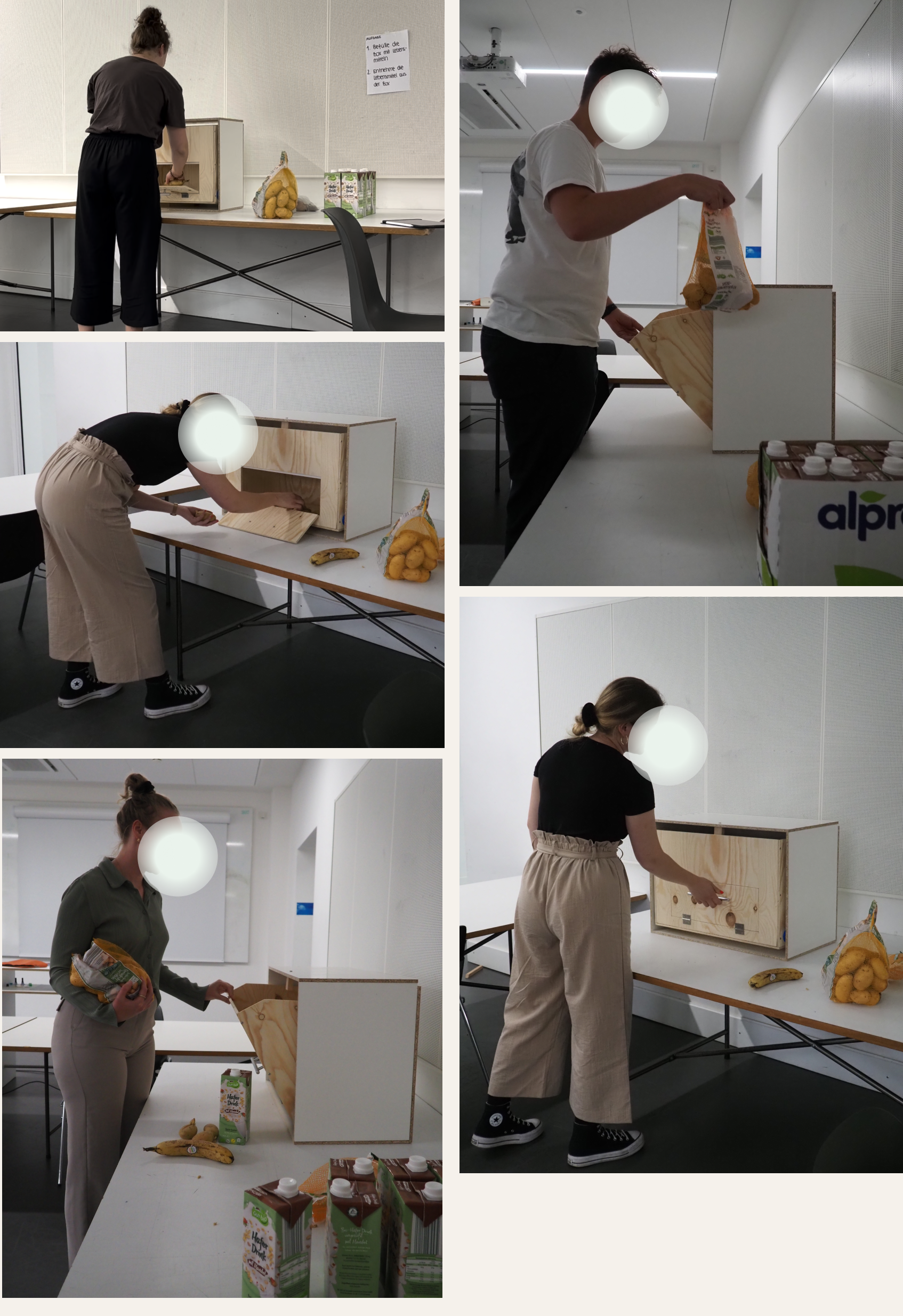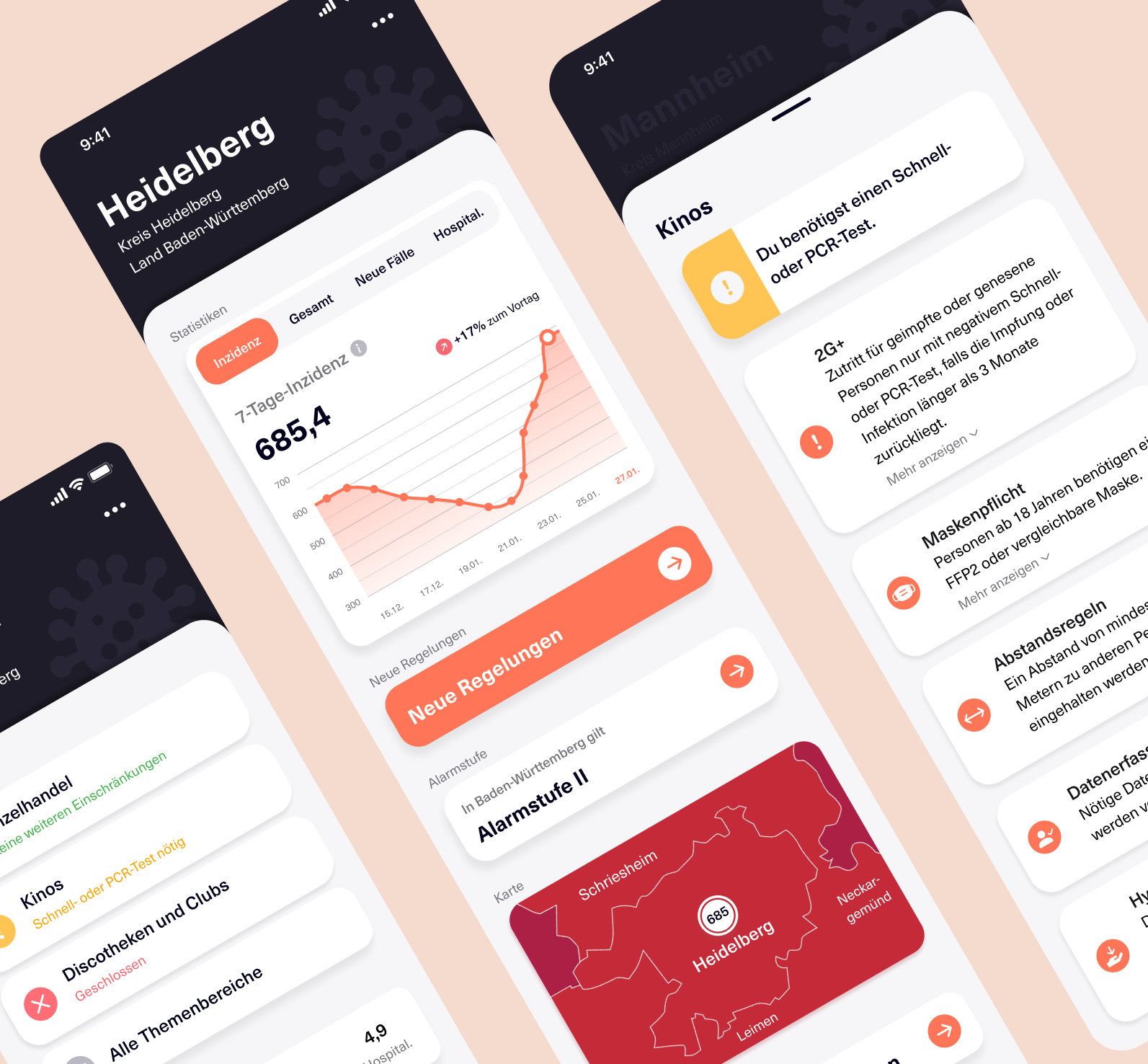Food For All - minimize food waste
Food For All is a concept of smart food sharing. By communicating fill levels in the fair divider (Fairteiler) to a food sharing app, the process of everyday food rescue can be made user-friendly and more accessible.
A fair divider (Fairteiler) is a place where all people have public access and can drop off food or take it away for free.
Siegel zeitgerechter Gestaltung
Time frame:
4 months, 2022
Project Partners:
Sabrina Kuom, Alina Zimmermann
Course:
Interface Design 2, supervised by Prof. Carmen Hartmann-Menzel @HfG Schwäbisch Gmünd
In the EU, nearly 57 million tonnes of food waste (127 kg/inhabitant) are generated annually.
according to the European Union's official website (7.12.2022)
Research phase
To begin with, we started by testing the current Fairteiler system in different places around us. Furthermore, we researched different approaches in different countries and the laws of food security in Germany, which play an important role.
We quickly realized during our research that many people are involved in the process of saving food. So in order to gain an overview we created a Stakeholder Map to gain an overview.
Because of the many stakeholders, we decided to focus on two main focuses:
The Food Supplier: the one picking up the food from supermarkets/ farmers markets/… and bringing them to the Fairteiler system
The Food Collector: the one going to the Fairteiler, fetching the saved food and using the products for cooking/eating
We conducted three qualitative interviews, with a volunteer/founder of a Fairteiler in Sindelfingen, a supermarket employee, and a staff member @Raupeimmersatt, a café that serves saved food.
Moreover, in our created survey, we asked 117 participants of food sharing about their experiences as a food supplier and/or collector. We learned a lot about the problems and motivations of the people.
Key Insights
Concept
Food for All has three central aspects:
an AI that records the fill levels and fill types of the boxes in the fair partition using a camera,
an app that makes the fill levels available to the user at any time
the boxes, which have been redesigned to meet the needs of every user group.
The AI
Using Google Teachable Machine, a transparent box and stones, we tested how machine learning can work using a camera and image data as a level query and how accurate these queries are.
Google teachable machine experiment
The App
The AI sends the fill levels of the boxes and thus of the Fairteiler to the app. Via the app, the food collector can view the transmitted fill levels of the favorite fair dividers. This makes it easier to rescue food in good time or to avoid possible overfilling.
In addition, the user can find other fair traders in the area. An additional function is the favoriting of certain foodstuffs, about whose refilling one is notified. There is also the option to learn more about the individual foods, their harvest time and possible uses through recipes.
Wireframes examples
Use Case
Screendesign Examples
The Storage System
Some of the requirements that the boxes should fulfill are:
Sturdiness, transparency, modularity and different handling methods for the collector and the supplier. In this concept, the supplier can fill the box from the top by tilting it. The pick-up person removes food through the lower lid. This way, the older food is taken out first and food waste is minimized.
Variations
Since different foods have different requirements, several versions of the box were created. The boxes for baked goods, potatoes, vegetables and fruit are each very similar, but have different interchangeable components so that the box is perfectly adapted to each food.
Handling the boxes
To ensure that older foodstuffs that are at the bottom of the box are removed first, there are two central ways of handling. The delivery person can tilt the inner box and fill the food from the top. The collector opens the lower flap and takes the food from there. There is also the possibility to remove the inner box to facilitate cleaning of the boxes and to maintain all hygiene standards.
Shelving system
The individual boxes have the option of being attached to the nearest box on each side. Thus, the Fairteiler can be individually adapted to any room as well as to any food distribution. Since the boxes are also individually adaptable, a bread box, for example, can easily be converted into a fruit box if there is an increased amount of apples in autumn.

Rapid Prototype Building

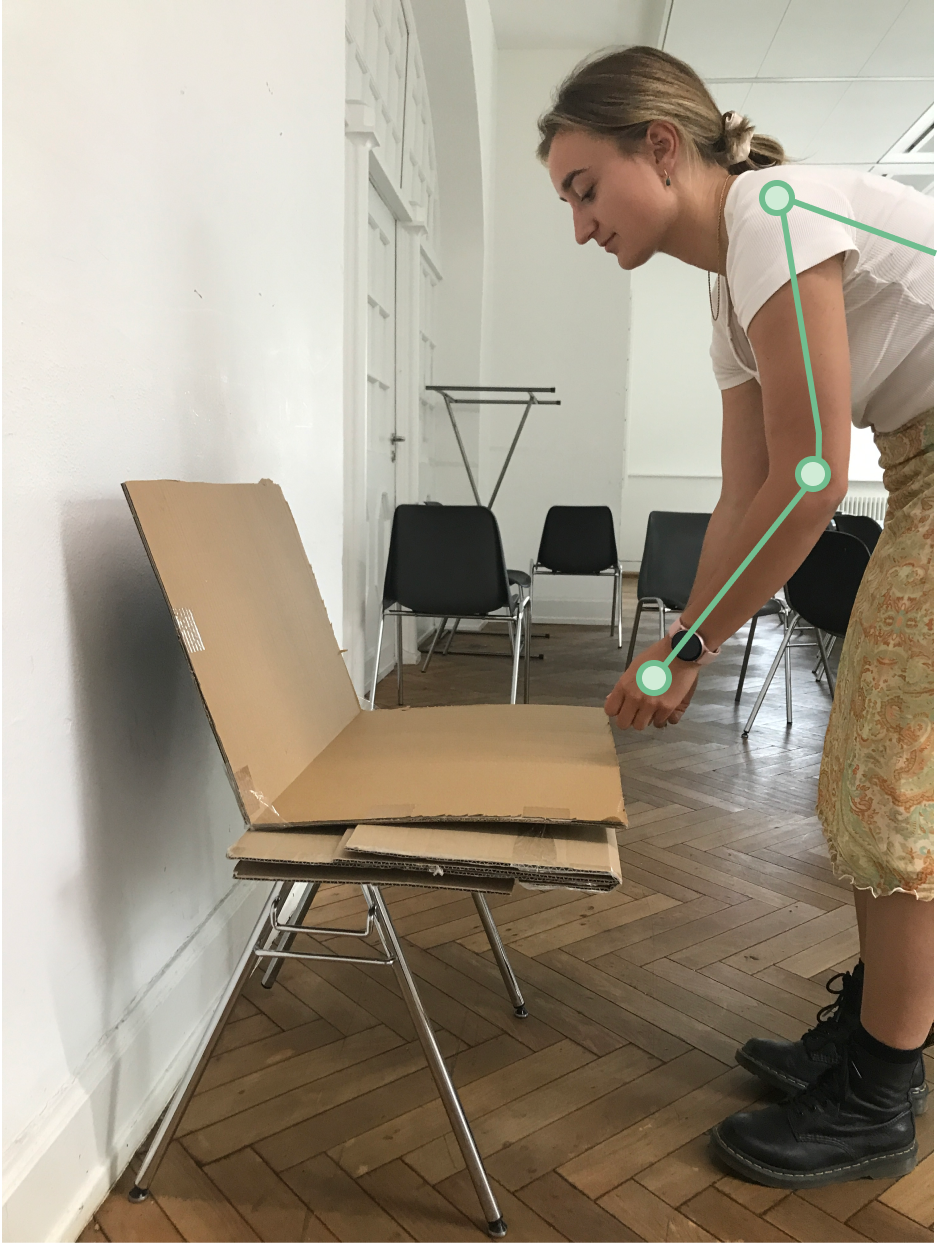
Ergonomics testings


functional prototype

3D prints of "tilt joints"

Rapid Prototype

User Testing
We used the prototypes we build for user testing, to see if our storage system works as we intended. We gave our users different tasks that include taking out and also filling the box.


